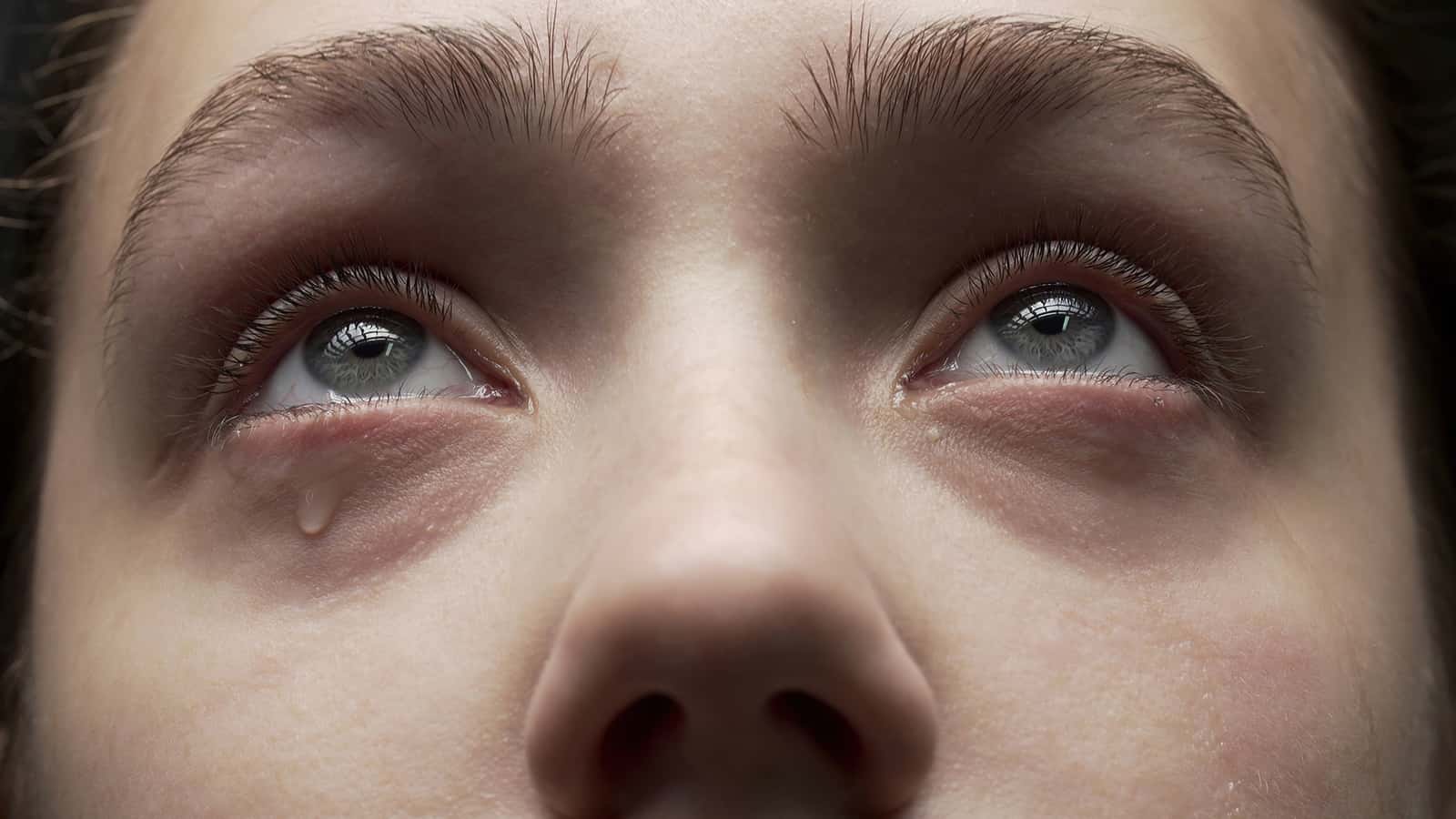Everyone cries from time to time, but did you know there are different types of tears? People cry when they are sad, happy, or sometimes they cry just because.
And crying is a bit of a controversial topic. Society has long characterized women as the weaker sex, so some label them as criers. Conversely, people label men as strong and tough, so they should never, under any circumstances, cry.
Or so society believed for a very long time. Tears are so common and normal for humans, yet so divisive at the same time. But most people don’t even know where tears come from, much less that there are three types of tears. But one thing is for sure: everyone cries. And not only is crying normal, but it’s not a sign of weakness.
No matter what stereotypes you have heard floating around, none of them are true. Kids who cry aren’t brats. Women who cry aren’t crazy and hormonal. And men who cry aren’t weak. And the sooner people learn the biological and psychological aspects behind tears. The sooner society might be able to normalize and understand crying.
Where Do These Types Of Tears Come From?
As you probably suspected, tears are made primarily out of water, and they have a similar structure to saliva. Besides water, they contain salt, oils, and about 1500 proteins. They also have electrolytes: sodium, bicarbonate, chloride, and potassium. They contain lower levels of magnesium and calcium. When you combine all these chemicals, you get three layers that make up the tears.
The mucous layer is the one that sticks the tear to the eye. The aqueous layer is the one that hydrates, repels bacteria, and protects the cornea. And the oily layer prevents the other two layers from evaporating. It also keeps the layers smooth so that you can see through them. All types of tears come from the lacrimal glands above your eyes. Once they form, they drain into your tear ducts, which are small holes in the inner corners of your eyes.
From there, they go down through your nasal bone, into the back of the nose, and back into the throat. They technically should not fall outside of the body. But, when you cry, you produce a surplus of tears, way too many for them to be able to go back through the nose. But some still do, and they mix with the mucus in the nose, so that’s why you get a runny nose when you cry. Every time you blink, a new layer of tears spreads across your cornea. So, if you think about it, you cry all the time.
One fun fact is that it’s virtually impossible to run out of tears. Your body produces somewhere between fifteen and thirty gallons of tears every year. But, as people get older, their body starts making a lower quantity of tears. That’s generally why getting older goes hand in hand with drier eyes. And this seems to be even more apparent in women after menopause, who produce fewer tears due to hormonal changes.
And, even though many researchers claim that women cry more, none had an apparent reason for why that is. Some say that in some places is due to cultural norms. Others say that it might be because men have smaller tear ducts. Others say that’s it’s because emotional tears contain prolactin, and women produce it 60% more than men. But, even though emotional tears are more common in women, the other two types are just as expected, no matter the sex.
The Three Types of Tears
This is so fascinating.
1. Basal Tears
The basal tears are the most common type of tears. They serve a functional role in the body. Without them, your eyes would dry out. Their purpose is to keep the eye lubricated so that you can blink and see. They also keep dust and other small, unwanted particles out of your eyes. Some substances that create tears, such as lysozyme, fight against bacterial infections.
The lacrimal glands continuously secrete these tears, evenly spread across the cornea when you blink. In 24 hours, the body secretes between 0.75 and 1.1 grams of tears. But, as mentioned before, this amount gets lower with age. If this quantity gets lower, or the quality of basal tears becomes worse, you might develop dry eye syndrome. This is a common condition, but people overlook it.
And, given the condition’s name, most people wouldn’t think to associate it with watery eyes. But the excess water gets secreted as your body tries to rehydrate the cornea. But, the most common symptoms are burning, pain, and redness of the eye. This is a specific issue of basal tears, and it’s most people resolve it with eye drops. But, if you have clogged ducts, your doctor might even choose to use lacrimal plugs.
Besides biological factors, some externalities can cause fewer basal tears to be secreted. For example, too much screen time, certain meds, and even strong wind can cause dry and irritated eyes.
2. Reflex Tears
At first glance, reflex tears seem very similar to basal tears. But not only do they have different chemical compositions, but they also serve other purposes. This tear comes from the lacrimal glands, but it has a much higher percentage of water. In fact, these tears are almost entirely made out of water. And this composition is mostly explained by their role. Just like the name suggests, these tears are secreted as a reflex to a stimulus.
For example, if a bug gets into your eye, your eyes will start to water, secreting reflex tears to get it out. They are even why your eyes water when you have dry eye syndrome; because your body is trying to make the pain go away. Reflex tears, also called irritant tears, respond to all kinds of irritation. They occur all the time, from unwanted particles to chemicals to onions, bright lights, and even strong smells.
And sometimes, they might even occur when you cough, yawn, or vomit. Because these tears should protect the eyes, they will usually release in larger quantities than basal tears. They are not secreted all the time like basal tears are. And while the lacrimal glands don’t need to be stimulated to begin secreting tears, your eyes may need more stimulation for the process to occur.
3. Emotional Tears
These are the types of tears that most people know about and think about when they hear the word “tears.” They are also called psychic tears, and they only occur when someone is overwhelmed with emotion. When you secrete these tears, people usually refer to the result as crying. Emotional tears connect to stress, anger, pain. But, contrary to popular belief, they don’t have to be related to negative emotions.
They can also happen when you feel joy, happiness, or relief. These tears have the same composition as basal tears, but they have more stress hormones. Additionally, they contain a higher amount of natural painkillers than any other type of tears. And the number of tears secreted when you cry is much higher than the amount of reflex or basal tears.
When people cry, they don’t just secrete tears. They can start sobbing (convulsive breathing), their heart rate can increase, their eyes go red. They can affect your whole body, and sometimes people cry so hard that they even vomit. It seems like crying stimulates the body to produce endorphins.
So, crying is a way to calm down and make themselves feel better. They are mood stabilizers, and they are the only tears that people have specific control over. People can learn to cry on command, but they can also stop calling if they want to. Psychologically speaking, emotional tears have developed to send particular messages to people.
For example, a theory states that people used to cry to show vulnerability or submission during attacks. But nowadays, it seems like tears send different messages, like indirectly telling someone to back off. And it is even used as a way through which people strengthen social bonds.
Final Thoughts on the Three Types of Tears (And What They Mean)
For some reason, tears seem to be a very controversial topic, even though most people don’t know much about them. But, even throughout history, people used them to stereotype certain people. As soon as someone sees another person crying in public, they’ll be seen as crazy or emotional. And some people even see crying as something that only women or weak men do.
But that couldn’t be further from the truth. Everyone cries, and not even emotional tears are a sign of weakness. But most people don’t understand the science behind tears, so they make assumptions. Thars are mostly water but with a few extra chemicals sprinkled in. They also contain salt, oils, proteins, electrolytes, magnesium, and calcium. These chemicals have a few roles, but they are mainly there to protect the cornea and allow you to see correctly. But not all tears are the same.
There are three different types of tears: basal, reflex, and emotional tears. The basal and emotional tears have a somewhat similar role in protecting the eye. But basal tears are secreted, while reflex tears only occur when the lacrimal glands are stimulated. So, if you have irritated eyes, or even if you are coughing or yawning, you might start tearing up. And the most common tears are emotional or psychic tears.
These tears constitute crying, and they occur when your emotions overwhelm you. And the composition of emotional tears even has stress hormones and natural painkillers. That’s why, after people cry, they tend to feel relieved. And you can use crying to signal to others that you need help or even that you need some time alone.

















 Community
Community

